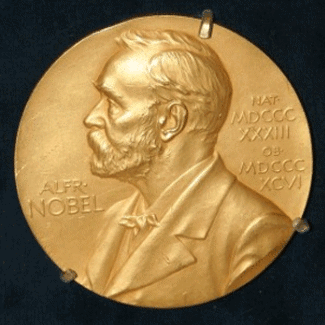TOMMY, CAN YOU HEAR ME?, by Charles Carreon06/01/10
“Tommy,” the first rock opera, created by Peter Townshend and The Who, received suitable deification in the 1975 Ken Russell production of the movie, starring Ann Margret as Tommy’s tortured mum, Oliver Reed as his materialistic stepdad, and Roger Daltrey, The Who’s redoubtable frontman, in the starring role. Filmed with astounding precision and what looks like digital clarity decades before the technology emerged, Russell’s epic transformed a popular record album to a milestone in cultural history.
Thirty-five years later, what is it that makes this movie relevant to the modern audience? Everything. In “Tommy,” Russell sank an exploratory drill into the zeitgeist of the late twentieth century, pulled out a core sample, and analyzed it with gas chromatography to reveal the psychological fault lines that shaped the psyche of the sixties generation. Presented in a delicious visual presentation that unites primary colors, outlandish sets, and over-the-top performances to bring out every nuance of the non-stop soundtrack, Tommy quite possibly reveals more than Townshend and The Who could ever have anticipated.
Giving himself a free hand with the sparse narrative, Russell moves in broad strokes from climax to climax. It’s war time. Hitler’s bombing England. Tommy’s conceived in a wartime romance, his Dad flies off in an RAF bomber to snuff Germans, and never comes back. Mummy gets the news while toiling away in a munitions factory, stuffing bombs with ball bearings that look suspiciously like pinballs. Then one day she gets a note, and faints dead away, spilling, you guessed it, lots of pinballs on the floor in a sort of orgy of random chrome movement. Mummy finds a new bloke to set up house with in a postwar boomtown, and everything is just tea and crumpets until one night Dad shows up with a big nasty scar on his face, not at all thrilled to see the new bloke, and the feeling being mutual, murder ensues, unfortunately witnessed by the child of tender years, who is thereupon advised, in no uncertain terms, at high volume, by now apparently evil stepdad and traitorous mum, that “You didn’t hear it, You didn’t see it, You won’t say nothin’ to no one ever in your life.” And just like that, the obliging little child turns deaf, dumb and blind, the most compliant fellow you ever could have asked for. Not surprisingly, this casts a bit of a pall over family life, but not enough to actually keep his parents from going out on the town, and Tommy is subjected to a couple of nasty babysitters who take advantage of his disability by manhandling and molesting him. Subjected to religion, therapy, and acid, like the entire sixties generation, Tommy emerges as insensible as ever, until at last he finds a crack in his isolation, and in streams the light of pinball!
Of course, pinball machines are an old technology, perhaps less resonant for a generation that has never pulled back the spring and fired steel balls into the maze of chutes, pads, and bonus-point holes, watching the numbers flipping over with a chunk-chunk-chunk sound, slapping the flipper buttons wildly, trying to keep that ball in play as long as possible, but Russell brings it to life pretty well. Tommy is an overnight sensation, and becomes the king of pinball who, as the lyrics of the song say, wins because “he ain’t got no distractions, can’t hear no buzzers and bells, always gets a replay, plays by sense of smell…” He gets rich, his parents hitch a ride on his fame, and one good thing leads to another one afternoon when his mum, tired of the deaf, dumb and blind routine, tosses him through a mirror and he pops out the other side hearing, talking and feeling. Tommy becomes the guru of his own religion, leading a worldwide network of disciples who adopt his doctrine of sense-deprivation and each take their places at their pinball machines, blocking off all sensory input with their handy sensory deprivation toolkit: “Put in your earplugs, put on your eyeshades, you know where to put the cork!” This turn of events would be a little less ironic if Tommy actually had been deaf, dumb and blind, not merely a trauma victim with amnesia and sensory denial. But Tommy’s mother and stepdad know a good thing when they see it. Delighted to discover that the kid they turned into a freak has managed to escape his psychological prison and become a very fine cash cow, they happily transform themselves into the chiefest of disciples, minding the needs of the faithful and reaping the earthly rewards. But the faithful are fickle, the sensory deprivation craze wears thin, there’s a riot, and mom and stepdad are killed by rampaging disciples eager to move on to the next craze. Tommy, finally freed from the need to conceal his father’s murder, declares his freedom from everything, climbs a symbolic mountain, the same mountain his real dad had been seen climbing at the very beginning of the movie, and emerges into the light of a brand new day, the first real day of his life since the darkness descended.
So it’s kind of like Hamlet with a pseudo-happy ending, isn’t it? If Hamlet had been steeped in the psychology of conflict-avoidance, sponsored a hokey religion so his traitorous mother and murderous stepdad could make a shitload of money, then let them be taken down by a mob of alienated devotees, so he could at last get on with his life. There’s something smug and adolescent about the story, of course. Little Tommy punishing his parents, sucking it up inside himself, hustling the public with their own lust for the miraculous, finally turning the whole game upside down and reclaiming his independence from everyone and everything. Which is why it is quintessentially the autobiography of the sixties generation, and also a map of failure.
Allow me to make my thesis painfully obvious. The killing that the sixties generation witnessed, and was told to be silent about, was the Vietnam war. Tommy’s blindness and deafness was the “my generation’s” refusal to absorb the social message to conform, to go to war and go to work like past generations. Tommy’s muteness was their refusal to communicate with a corrupt society, their retreat into back-to-the-landism, their flight into Eastern spirituality, their turning on, tuning in, and dropping out under the guidance of Tim Leary. None of which quite turned out as promised, and for a reason that the opera makes apparent – Tommy never confronts or exposes his mother and stepdad for their crimes. When they are killed by the rampaging mob of disgruntled devotees, it’s a bit too convenient, a deus ex machina, a liberating fantasy that parallels the apocalyptic hopefulness of the post-sixties era, when the imminent collapse of the existing social order was fondly anticipated as the precursor of the “Aquarian Age,” and of course, never came to pass.
There is more to Tommy than the history lesson, though. It’s also a movie for visionaries willing to peer into the maelstrom of existence, letting the blind eyes of an alienated child be their portal into a hallucinatory inner reality:
“Soaring and flying images spin
He is your leader
He is your guide
On the amazing journey
together you'll ride…”
Russell deftly places the audience inside Tommy’s mind, and the view is frankly terrifying. What I wish I could do, and can’t, is show you this movie in a large theater, to reproduce the experience properly. If you get the chance to see it in a big cinema, don’t let it get away. And if you are watching it at home, try to remember, as you watch the faces of traitorous mom and murderous stepdad filling the screen, screaming “You didn’t hear it! You didn’t see it!” that Russell wants their faces to be twenty feet high, totally overwhelming your identity, your tiny little self. He wants to shrink you down to nothing, to compress you, like the big bang in reverse, into a tiny, isolated sphere.
Speaking of spheres, they dominate the film. The primary Platonic form, the sphere is a pure abstraction that Russell uses first to capture the mind of the viewer, and then to hold it at the centre of attention. For a good part of the movie, it begins to seem as if Russell’s whole goal is to subject the audience to one insane experience after another. Russell’s familiarity with psychedelics is more than obvious during this part of the movie, and if he were less skilled in laying it on thick, viewers would reject his heavy-handed treatment. Instead, we feel the jolting cruelty personally when his cousin tortures him with cigarette burns and near-drowning, we squirm as he’s molested by his uncle, and we are rapt in horror as Tina Turner, The Acid Queen, in one of the most unhinged performances of all time, “tears his soul apart.”
Each traumatic event generates another traumatized Tommy and another sphere of contained trauma. Each sphere is color coded – torture is yellow, molestation is blue, madness is red. The spheres symbolize Tommy’s capacity to contain and control each ration of abuse that he is handed, but for a time, it seems as if Tommy is simply going to generate a whole family of traumatized selves to inhabit his hollowed-out personality. The way out is signaled during the Acid Queen sequence, when he sees his true father, holding a pure white sphere, and is himself transformed into his father, and into a crucified Christ-figure.
Tommy’s mother’s efforts to heal him lead us to more external spherical revelations. At the Church of Marilyn, High Priest Eric Clapton leads the rites of devotion to the silvered globes of Marilyn’s breasts and butt, as blind pilgrims gain admission two-by-two, piously kiss the mirror that reflects her exposed underwear, then consume her body and blood -- sleeping pills and Johnny Walker.
Salvation comes in a sphere, the pinball. And this is when you have to stop and acknowledge the hubristic genius of the opera. Buddha, Mohammed, Jesus, the other serious guys, would not be caught dead wringing wisdom analogies out of a pinball. We are therefore being reminded to laugh at ourselves, at Kahlil Gibran, Madame Blavatsky, the Ascended Masters and, even though he wasn’t yet a glimmer in a publisher’s eye, Deepak Chopra. They are all at the pinball level. We are at the pinball level. So now we can resume our banal spiritual contemplations.
Like a pinball, an individual human is subject to cause and effect, being bounced around in a little game, slamming around racking up points, trying to delay the inevitable moment when, despite frantically working the flippers and slamming the table with our hips, the ball goes down the hole and it is “Game Over.” For Tommy, the pinball game is the only external object he can allow himself to perceive. Since he is not physically blind or deaf, but rather is blocking out a world that has erected an insuperable barrier to communication, pinball is all he allows himself to see. Pinball is a simulated world, a safe place where he can stop time and seemingly defeat death by always getting a replay.
The scene where Tommy conquers Elton John, the Pinball Wizard, is the cinematic high point of Sir Elton’s career. Russell plants the pianist atop a huge pair of plastic boots that raise him several feet off the ground, and supplies him with a keyboard-equipped pinball machine to pound with furious futility until he goes down to inevitable defeat, grimacing with frustration. Toppled from the throne of his massive footwear, his erstwhile fans carry him out of the hall on his back, only the soles of his enormous boots visible above the crowd.
Fortune follows fame, and soon Tommy’s mother and stepfather are wallowing in success. But the sweet taste of the good life turns bitter for Tommy’s mother, because Tommy remains deaf, dumb and blind, sealed within himself, staring enigmatically into the mirror. And finally, what none of the healers, therapists, and quacks could do, she does. In an exasperated fit, she throws Tommy through the circular mirror in her boudouir. He crashes through, falls into the swimming pool, and in a baptismal rebirth scene, finally opens his eyes, sees the world around him, staggers into a forest, gesticulates rudely at soldiers engaged in military maneuvers among the trees, is flipped over the shoulder of a camouflage-clad soldier, bursts onto the beach, sprints past parked cars filled with people staring stupidly through sunglasses, cartwheels across the sand, and runs over the waves, into the sky, under the sea, across lava lakes, in a visionary explosion set to the thumping song, “I’m Free.”
Tommy not only thinks he’s free, he thinks he’s a man with a mission, and becomes a pinball-guru. The silvery sphere then becomes the symbol of royalty and dominion. The “Tommy cross” is the letter “T” surmounted with a silver ball. For a brief time, everything is lovely, but when an adoring young fan is injured in the midst of the crowd, and Tommy never even learns of her fate, it’s a hint that obstacles lie ahead. Some rougher spheres suddenly appear everywhere, because the training camp is heaped with huge piles of silver balls with handles on them, which seems to be both a broad joke about male virility and a reminder that all of this Messiah-hood is a big ball and chain.
In counterculture circles, the name “Gottlieb” rings bells wherever it appears, being the surname of Dr. Sidney Gottlieb, the Mengele-like physician who led the CIA’s MK ULTRA program, reputedly an acronym for “Making Killers, Utilizing Lethal Tradecraft Requiring Assassination,” and played fast and loose with the minds of experimental subjects, much like the Acid Queen. So it hardly seems an accident that all of the pinball machines in Russell’s production are “Gottlieb” machines. Why not some manufactured by Bally, Williams or Stern, also big names in the realm of the silver ball? And the Gottlieb games that get particular notice are very British, very royal – “Kings and Queens” is the game Tommy plays when he beats the Pinball Wizard, and “Royal Guard” is destroyed when his disciples riot. Ominously, after she is killed, a pinball machine serves as the funeral slab for Tommy’s mother’s body, and while the maker’s name is not visible on the machine, the stripped frame displays a series of ones and zeroes, suggesting that ultimately, his mother was nothing but a machine,
a wire mommy, a simulacrum, finally exposed for the empty display that it always was. The Tommy Church’s prescription of pinball therapy as the cure for every human ailment is thus simply a campy symbol for cultic mind control methods of whatever stripe.
By being the guru of his Church, Tommy is able to keep his mother and stepfather under control. He becomes morally superior and financially omnipotent, so they can’t impinge on his freedom. One problem remains, however – nobody really needs his religion. This becomes quite clear when rebellion breaks out among Tommy’s followers, and they kill his parents and desert him. He lost his followers as quickly as he gained them. And there’s little time for mourning his mother’s death, either. Tommy’s mother has done little to make herself sympathetic throughout the movie. She has never been a mother in the sense of devoting herself to her child’s happiness. At its apex, her self-torment amounts to nothing more than reveling in maudlin sentiment while writhing drunkenly in her snow-white bedroom, cavorting with a champagne bottle as the television successively spews bubbles, canned beans, and offal over her fish-net bedecked body, culminating in sinuous humping on a shit-smeared, man-sized tubular pillow. So the farewell to Mom is a brief affair that releases Tommy from bondage to the person who forced him to keep a crippling secret, ruining his life in order to conceal her own guilt.
Tommy at last realizes he’s not a spiritual guide, he’s one more human being, who needs to learn from other people, from all humanity. At last, he sings triumphantly, “Right behind you, I see the millions." Ascending to the mountaintop, he reaches the peak and triumphantly greets the rising sun, a huge, warm, reddish sphere that enhaloes his entire body in a victorious stance, legs apart, arms spread in exultation. This is only the second time the full circle of the sun has appeared in this movie filled with shiny spheres and moons. The first time was in the first scene, where Tommy’s dad, in mountaineering garb, reached the peak of the same mountain at sunset, and then began his descent, as we know, into death. Tommy returns to the mountain and the sun reunites him with his father and his vital inheritance as a living human.
With this closing scene, Russell has literally fitted the entire opera between the two celestial spheres, the sun and moon, raising every human’s battle to break out of the lies that conceal reality to an epic level. Transcendence, Russell seems to be saying, isn’t achieved by playing human games like pinball, in which you progress through a linear pattern to higher and higher numbers, and judge your success by popular acclaim. Rather, it is an adventure that you do not begin until you throw over the oppressors that prevent you from speaking the truth. Russell concludes a work that takes over your senses at high speed and high volume with a message that, although born from the turmoil of the sixties, will resonate meaningfully for generations to come.




